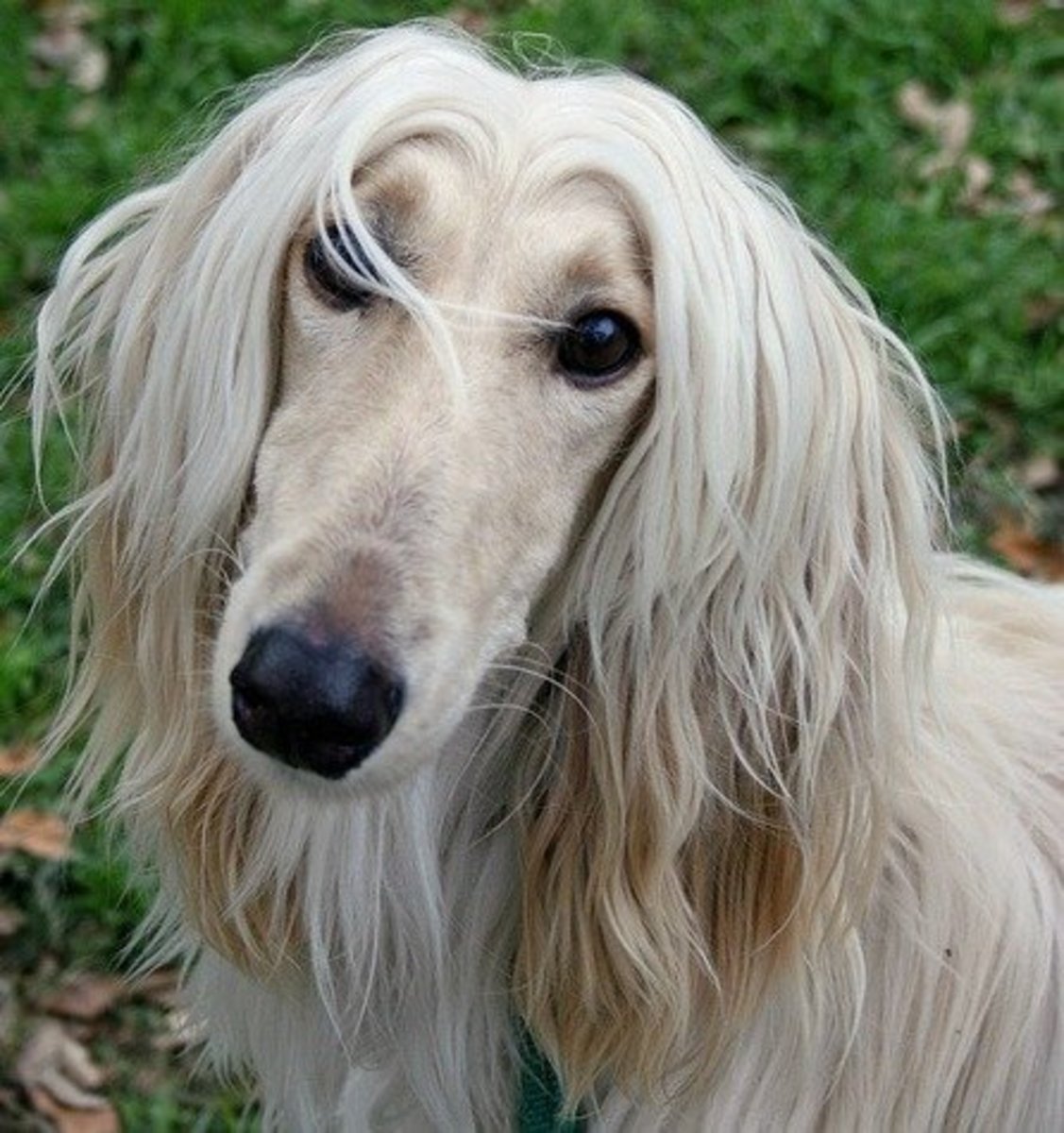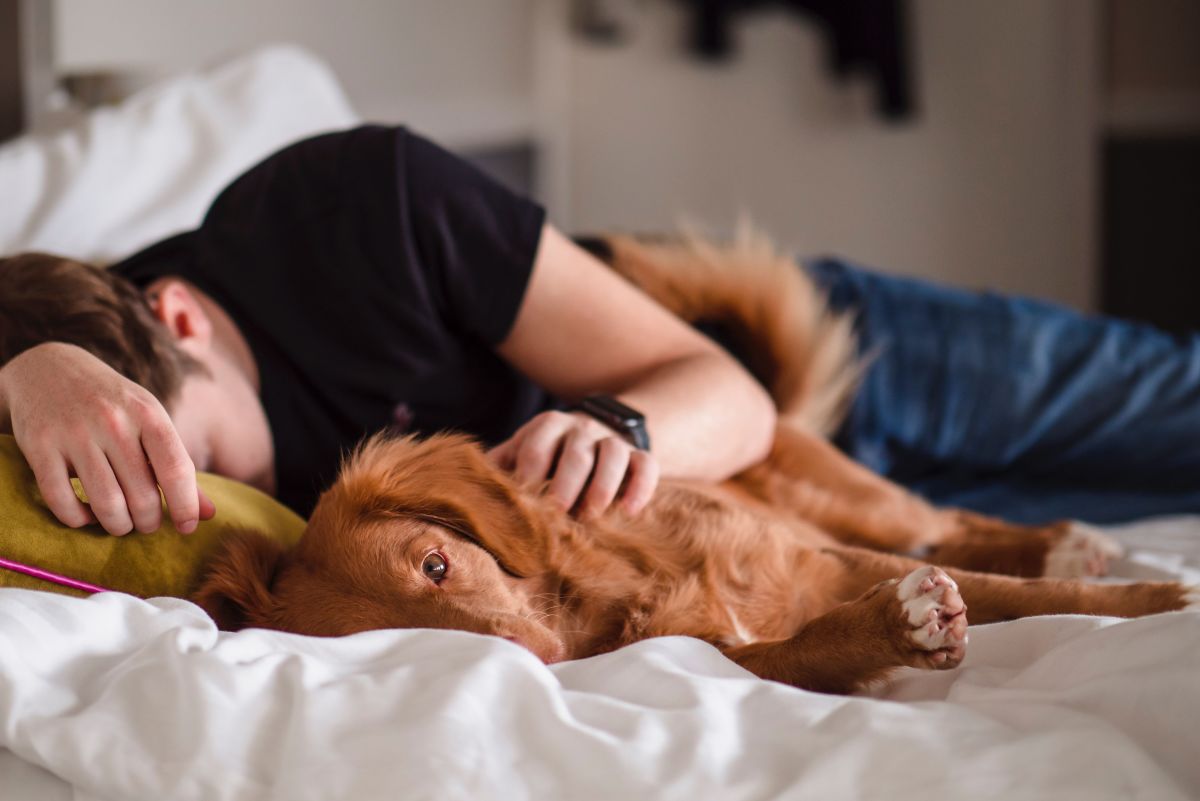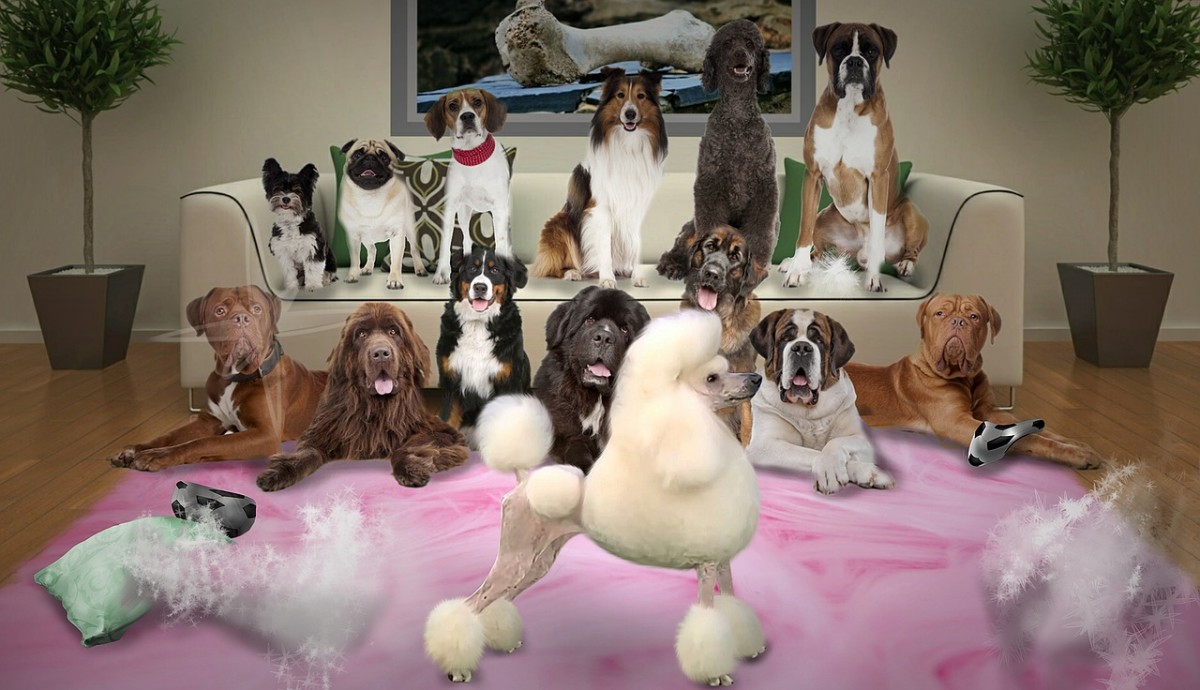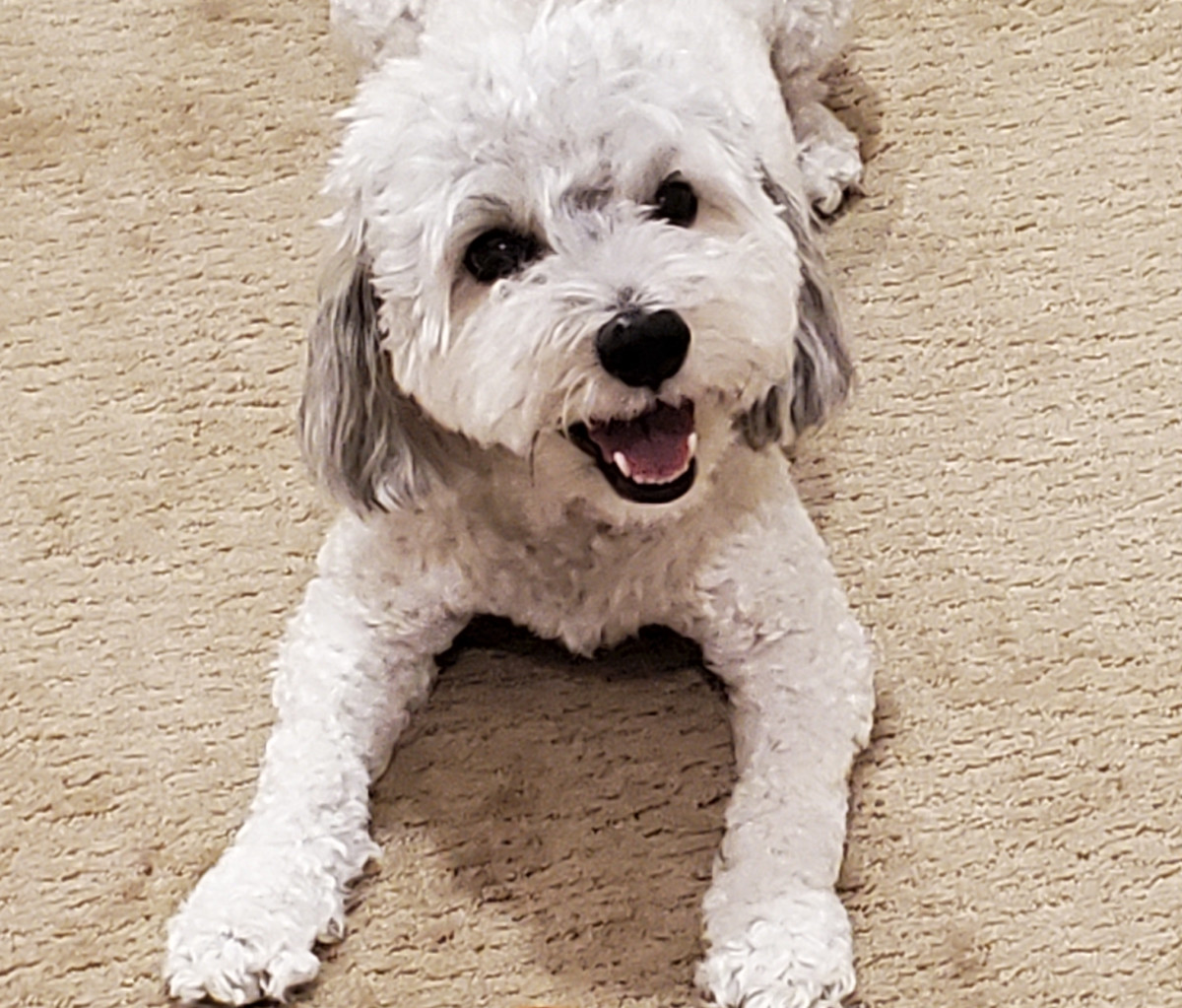- HubPages»
- Pets and Animals»
- Dogs & Dog Breeds»
- Selecting a Dog
10 Dog Breeds Suited For Apartment Life
The truth is, so long as proper mental and physical stimulation are provided, almost any dog can live in an apartment. Of course, some breeds, such as these ten, are more suited to life in an apartment due to factors such as their size and activity requirements.
Just because a breed did not make this list doesn't mean it wouldn't be perfectly happy living in an apartment. This is simply a list for ten breeds that I would recommend to someone looking for an apartment friendly breed. More importantly, just because a certain breed does tend to adapt to apartment life does not automatically mean that it is the right breed for you. You may love Alaskan Malamutes, but do you have the space for one? If your apartment already feels cramped, you probably don't. Consider the price of the breed, not only to purchase but to care for. Some breeds are prone to health problems that may require more frequent trips to the veterinarian or expensive medication, while others have more demanding grooming needs that quickly add up. Costs associated with feeding, grooming and veterinarian care almost always increase with size. How much time and energy are you willing to commit to exercising the dog each day? Do you have children or other pets? There are a lot of factors that need to be considered to determine what breed is best for you.
What breed do you think is most suited for apartment life?
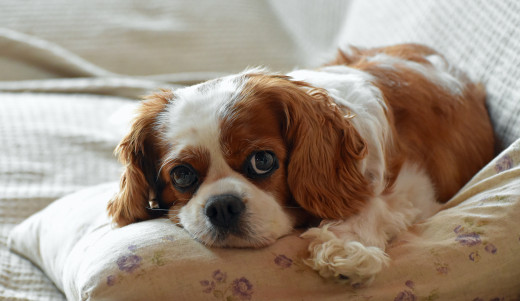
Cavalier King Charles Spaniel
Naturally well-behaved, the Cavalier King Charles Spaniel is often described as the “perfect lap dog”(source), and makes an ideal house pet, even in a small apartment.
The Cavalier King Charles Spaniel is known for being quite and calm. They are also known for being a sweet, gentle, playful, willing to please and affectionate (source) dog who thrives as part of the family (source). Despite being well suited for apartment life and having exercise requirements that are easy to meet, the Cavalier is a spaniel and often enjoys spending time outdoors, exploring, sniffing and chasing (source).
Cavaliers do shed but it is not excessive. A Cavalier's silky coat requires only brushing to keep it neat , which compared to many other dogs in the toy group, is quite minimal. Overall, Cavalier King Charles Spaniels are quite easy to keep.
Yorkshire Terrier
Yorkshire Terriers, commonly referred to simply as “Yorkies”, offer big personalities in a small package (source). In the nineteenth century, the breed was used to catch rats. Today, Yorkies remain terriers by nature and, seemingly unaware of their small size, they are brave, determined, investigative and energetic (source).
While Yorkies are often able to exercise themselves within the home (source), they require daily interaction with their humans. While this is definitely not a dog that can live outdoors, most Yorkies enjoy spending some time outside. A daily walk is a great way to bond with and exercise your Yorkie out of the house. Of course, due to their small size, Yorkies should not be taken outside in especially cold weather.
Yorkies do have a tendency to bark which makes them reliable watchdogs (source). However, this tendency may not be appreciated by your neighbors if you are living in an apartment.
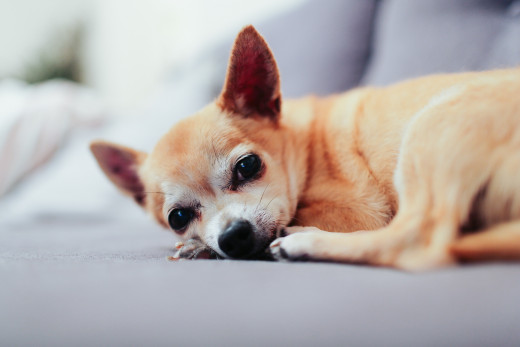
Chihuahua
The Chihuahua may be the smallest dog in the world, but they are often described as being “gigantic in heart and personality” (source). There are two varieties of Chihuahuas – one has a short and smooth coat, the other, long and silky (source). Aside from the physical appearance, the only difference in the two varieties is the grooming requirements.
Because of their small size, they require little exercise and are well suited to life in the city or an apartment. While they do not require a lot of exercise and would happily spend most of their lives curled up on your lap (source), the breed is not lazy by nature and many Chihuahuas love being outside. That being said, for the most part, a Chihuahua can get all the exercise it needs by running and playing around a house or apartment.
Something to keep in mind before purchasing a Chihuahua is your climate. Chihuahuas were bred for the warmth of Mexico and don't do well in cold weather (source). If you do live in a cold weather area, you may have to invest in pee pads and allow your Chihuahua to do his business indoors.
Another thing to keep in mind before purchasing a Chihuahua, especially if you live in an apartment, is that the breed can be more prone to barking than other breeds. It is important to discourage barking from the start because their surprisingly loud bark may not be appreciated by your neighbors.
Bulldog
Despite the common misconception, this breed is not called 'English' nor 'British', it is simply the 'Bulldog' (source).
Bulldogs have the ability to adjust to just about any environment (source), including apartments. The breed is said to be among the most mellow and docile of dogs (source), and their sweet, gentle personalities, combined with their tendency to form strong bonds with children (source) has given them a reputation as an excellent family pet. Even though an adult bulldog can weigh up to fifty pounds, this breed is often happy to curl up, or try to curl up, in the lap of a family member (source).
Although their exercise needs are minimal compared to most breeds, they still require regular moderate exercise such as a daily walk or even an off-leash romp in a safe area. However, bulldogs should not be expected to jog, walk long distances or jump from any heights (source). Because of the breed's build, bulldogs are not strong swimmers.
Like their exercise needs, the breed's grooming requirements are also minimal. A bulldog's coat needs very little attention, however, any wrinkles and folds should be cleaned daily.
Bulldogs, in addition to being prone to snuffling, snorting and snoring (source) because of their facial structure, may also experience breathing difficulties in hot or humid weather.
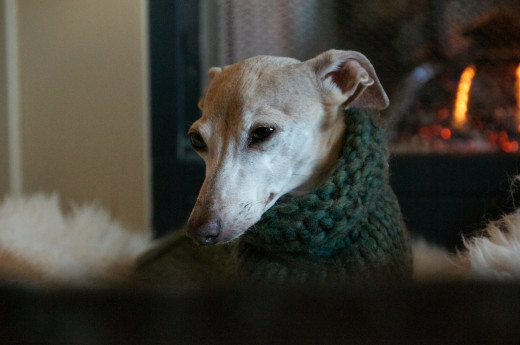
Greyhound
Given that the greyhound is the world's fastest breed of dog, this may not be a breed you were expecting to see on this list. But greyhounds are often referred to as “the world's fastest couch potato” (source) and are actually quite well suited for apartment living.
It should come as no surprise that greyhounds require daily exercise, but their exercise needs are not as demanding as you may expect. One of the best ways to satisfy a greyhound's exercise needs is to simply take him on a long walk.
As a family pet indoors, the greyhound is usually quite, calm and extremely well-mannered. The breed tends to relish creature comforts and must have soft bedding and warmth (source), they are also likely to make themselves at home on furniture, if permitted (source). However, greyhounds do have a powerful chase drive and may also have a strong hunting instinct. Because of this, even the friendliest greyhound may pose a threat to small animals, including other pets.
The greyhound's grooming needs are even less demanding than their exercise needs. Their coat is extremely easy to care for, and requires only occasional brushing to remove dead fur. However, greyhounds do have strong fast-growing nails that should be trimmed regularly with a nail clipper or grinder in order to avoid overgrowth, splitting and cracking (source).
Havanese
Don't be fooled by the small size of the playful Havanese. The naturally affectionate breed is quite durable and makes an excellent dog for children. In addition to making an excellent family pet, the Havanese, which is the national dog of Cuba (source), often makes a perfect city dog. Although Havanese are energetic by nature and enjoy a good romp, their exercise needs are minimal and easy to meet and the breed can live quite happily in an apartment.
While a short walk or an enthusiastic play session should satisfy the breed's daily exercise needs (source), the Havanese has demanding social needs and does best when they are with their families. This is not a breed that will be happy being left alone all day (source).
Although the Havanese is said to be a reliable watchdog, the breed, unlike many other small dogs, is not known for excessive barking – a perk that contributes to their apartment suitability. Another breed perk is that the Havanese is non-shedding and a great option for people with allergies to dog fur.
Shih Tzu
Some dogs were bred to protect, others to hunt, but the Shih Tzu was bred to spend most of its day inside royal palaces (source). If you don't have a royal palace, that's fine, your apartment will do.
While Shih Tzus are usually very outgoing, affectionate, happy and friendly (source), they can also have a sassy attitude. The breed is known for snapping, particularly if startled or annoyed, and can be difficult to train. Obedience should be a priority from an early age, keeping in mind that praise and rewards are more effective than punishment (source).
Although the Shih Tzu is very much a lap dog, it loves to play and romp and requires daily exercise. A vigorous indoor game, outdoor playtime or a brisk walk should be enough to satisfy a Shih Tzu's exercise needs (source). In addition to ensuring their Shih Tzu gets plenty of exercise, owners should be careful not to overfeed as this small breed gains weight easily.
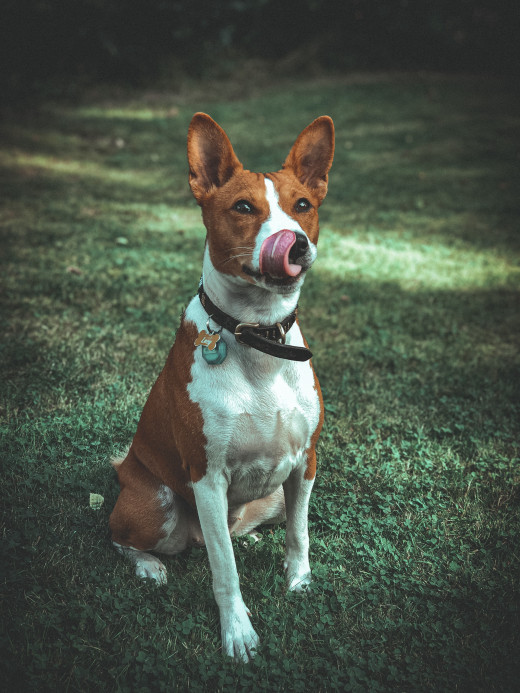
Basenji
Originally developed in Africa for hunting, the Basenji is among the oldest of all dog breeds. The Basenji is often referred to as the “Barkless Dog”. Rather than barking, the Basenji makes an assortment of sounds, the most common is a sound described as a cross between a chortle and a yodel (source).
While the Basenji generally does well as an indoor dog with access to a yard (source), they can live happily in an apartment. However, the breed has a rather mischievous sense of humor (source) and requires regular mental and physical stimulation. Their exercise needs should be fulfilled by a brisk daily walk and some vigorous playtime (source). Mentally stimulating toys are also highly recommended for this breed.
For those who have allergies to dogs or simply dislike the smell of dogs, the Basenji is an excellent breed to consider. The Basenji lacks the common 'doggy odor', even when their fur is wet (source). The Basenji is also known for cleaning their faces with their paws after a meal, which is one of the reasons some people claim the breed has cat-like mannerisms (source).
Unlike some of the more popular breeds which seem to be readily available, finding a Basenji breeder will likely involve some research and once you do find a breeder, you should expect to be put on a wait list. One of the reasons for this is that unlike most domestic breeds which will come into heat twice a year, a Basenji bitch only comes into heat once a year (source).
Have you ever heard the noises of the 'Barkless Dog'?
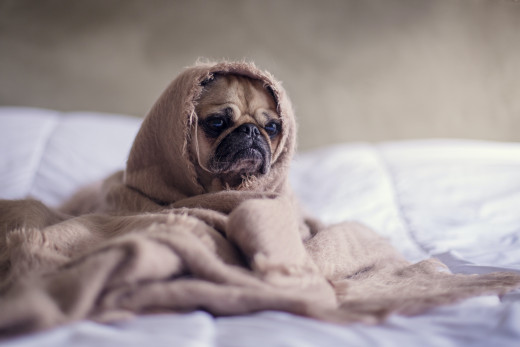
Pug
Of all the breeds in the toy group, pugs are probably the sturdiest. In fact, some people think the breed should be considered a 'non-sporting breed'. Pugs can have a unique sense of humor and come across as serious at times. But for the most part, they are fairly laid-back dogs, who are not as prone to bad habits such as barking, digging or chewing as some of the comparable breeds. However, pugs are clowns at heart (source) and seem to have an endless sense of curiosity. As with any dog who is not properly mentally and physically stimulated, a pug's boredom will likely lead to bad behavior.
While it is important to provide mental and physical stimulation, pugs are not exactly natural athletes (source). Their exercise needs can usually be met through a lively game or a moderate walk on leash (source). So long as their needs are met, pugs seem to adapt easily to any living situation, including apartments.
In addition to their easy-to-meet exercise needs a pug's short coat requires very little grooming. However, pugs do shed and require daily cleaning of their face wrinkles.
It is important that potential pug owners know that because of their short muzzle, pugs do not do well in hot, humid weather and must be observed carefully for heatstroke (source).
Scottish Terrier
As the name suggests, the Scottish Terrier, affectionately known by many as 'the Scottie', originated in Scotland in the 1700s (source). While the main role of the breed today is companion, most Scotties have retained their natural hunting instincts and are known for having a strong prey drive (source). Despite these natural instincts, most Scotties seem to thrive as house pets (source) and adapt to almost any accommodation (source). With proper care, the breed can be quite happy living in an apartment.
Scotties require daily exercise and excitement (source) and receive, at the very least, one brisk walk each day (source) to keep them satisfied. Because of their strong chase instincts, outdoor exercise should be on leash or off leash in a safe and secure environment. Although happy to join in most activities, due to their build, Scotties are not strong swimmers.
Scotties have a tendency to dig and bark (source), as most terriers do. Proper mental and physical stimulation will help prevent this unwanted behavior. Obedience training, and previous experience with dogs is also recommended for this strong-willed breed.
Quick Quiz
view quiz statistics© 2015 Marley



